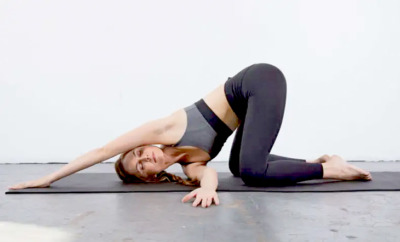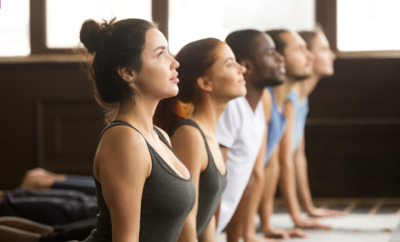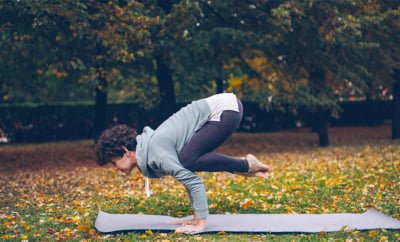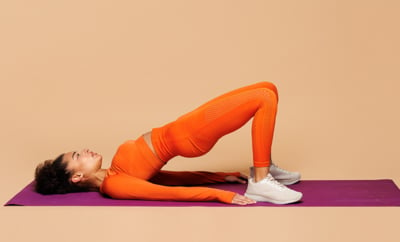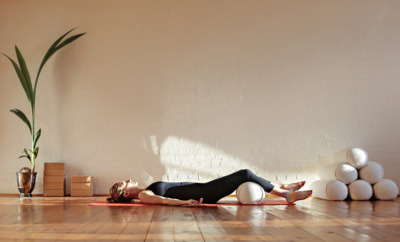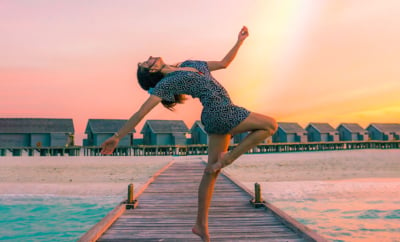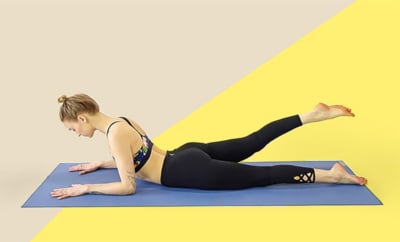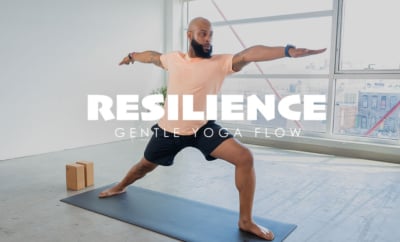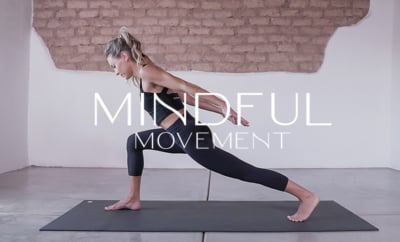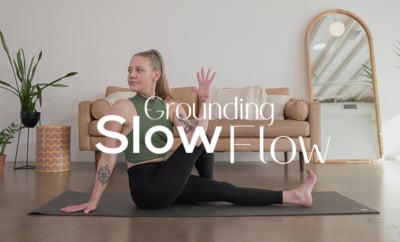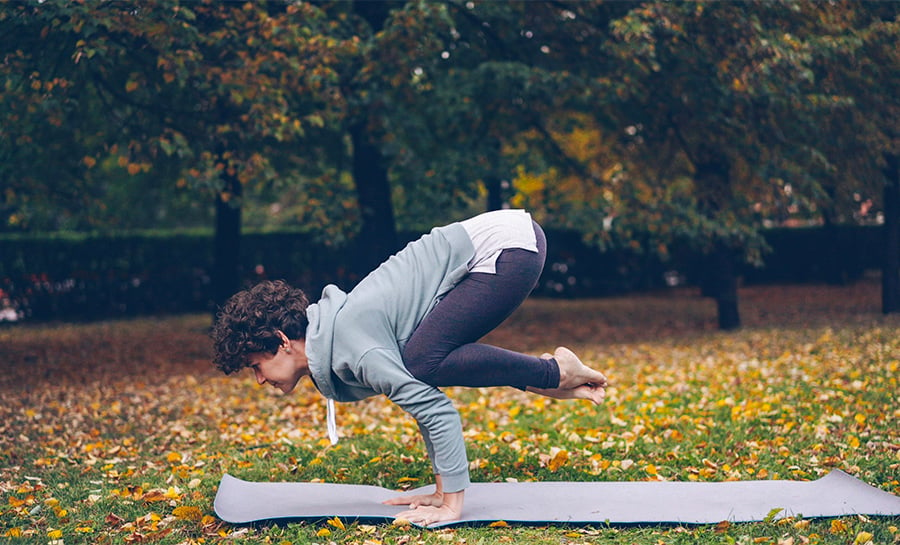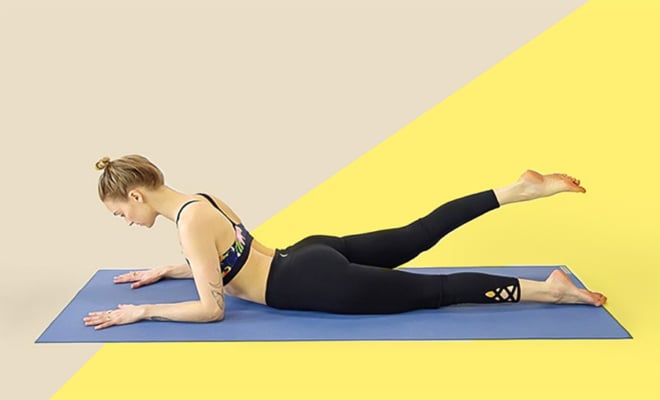This Is Why You Need to Have a Restorative Yoga Practice (According to an ER Doctor)

RestorativeYogaLongevity Feature
Cognitive, emotional, and physical health are what I like to think of as the “three pillars of longevity.” Longevity doesn’t just mean living a long time. It also means living your best life now and as you age. Restorative Yoga can be a cornerstone of this temple of vitality.
While it may look like you’re not doing much in a Restorative Yoga pose, there are, in fact, a lot of things that go on when we allow ourselves to be supported by props, our breath, and a quiet space.
To those of you out there that are skeptical that any “lying around on props” can advance your practice, trust me, it can. I am living proof of it.
Restorative Yoga has helped me in every aspect of my life and is the reason I can be so productive.
I am an emergency physician, medical acupuncturist, business owner, educator, writer, mother, wife, and high-level endurance athlete with over 13 Boston Marathons under my belt (yes, I qualified for each one and even raced with an elite bib) and a full Ironman.
I can confidently tell you that adding Restorative Yoga to my schedule has helped me in every aspect of my life and is the reason I can be so productive.
Not convinced yet? Here are 5 Big Benefits of Restorative Yoga (Plus the Motivation You Need to Try It!)
What Is Restorative Yoga?
So what is at the heart of Restorative Yoga anyway? Well, experientially, when we are in a Restorative Yoga pose, the idea is that all the props we use meet our body’s every nook and cranny.
This allows for all of our tissues to relax. It’s like a cradle that supports every empty space so there is absolutely no effort against the pull of gravity for any of your tissues. There is simply no “doing” at all.
Restorative Yoga is like a cradle of support into which you can cocoon.
This supported space allows a true moment to draw our mind and body inward, or – as yogis describe it – to be in the state of Pratyahara.
Pratyahara Explained: The Fifth Limb of the Yoga Sutras and the First Step Toward Meditation
Physiologically, what is happening when we get to this place where our tissues are completely supported is deep but awake relaxation. There are few times in our day when we can really achieve this conscious state of being.
How Restorative Yoga Affects the Nervous System
In this state of what I like to call “full body quiet,” we allow our parasympathetic nervous system to become more dominant.
This nervous system response affects us holistically, sending messages to our cardiovascular system, endocrine system, immune system, digestive system – really, all of our systems! It is the space and time when our holistic selves can take a deep rest – but with awareness.
Learn About the Parasympathetic vs. Sympathetic Nervous Systems and How Yoga Affects Each
The difference between practicing Restorative Yoga and sleeping is that during Restorative Yoga, we’re aware of our body and mind and can thus allow for conscious learning. This lays down of pathways in our brain that allow us to get to this place a little easier the next time we practice.
Neurons that fire together, wire together. Or as Aristotle said, “We are what we repeatedly do.”
Over time, being able to enter into deep relaxation and increased engagement of our parasympathetic nervous system translates to a cascade of long-term benefits that promote wellness and are a defense against disease.
Try These 4 Restorative Yoga Poses to Relax Your Body and Mind
These Are the 3 “Pillars of Longevity” (And How Restorative Yoga Supports Each One):
Circling back to the idea of longevity and vitality, I like to group these into three categories.
1. Cognitive Health
When our brain is allowed a break from overstimulation, we give it the space to access the frontal lobe, which is a slower system than the deeper areas of the limbic system. This allows us to be more contemplative, rather than reactive.
This allows for:
- Increased creativity
- Less reactivity
- Better memory retrieval
- Better communication skills
- Better sleep
2. Emotional Health
Have you ever noticed how much more likely you are to make a snappy remark or poor choice, or let the negative talk dominate when you are sleep deprived, over-trained, and/or over-stressed?
Again, being in a more sympathetic-driven state pushes us to be more reactive as our “fight-or-flight” response is more likely our default as we navigate our day. Choosing to rest and restore allows the parasympathetic state of being to become more dominant.
This allows healthy choices that result in:
- Practicing more self-care
- Not taking on more than we can accomplish
- Saying no to unhealthy relationships, people, food, substances, shopping, gambling, etc.
- Saying yes to simple things that make us feel good about ourselves (being with friends, volunteering in our communities, taking time for our families, hobbies, etc.)
- Better sleep hygiene (often when we have anxiety, depression, or mood swings – to name a few mental health issues – it is more difficult to achieve quality sleep)
Use These 4 Restorative Yoga Poses for Immediate Stress Relief
3. Physical Health
When we allow time for tissue recovery (and by “tissue recovery” I mean ALL tissues, including our brain and nervous system), we allow gene expression and other processes that allow for cellular clean up, repair, and healing.
Think about how long your car would last if you never changed the oil. We are not entirely different. High-level athletes actually plan rest into their training schedules.
It allows for tissue repair, which builds:
- Strength
- Mitochondrial density
- Improved metabolic function
- Improved efficiency and endurance
- Improved attitude
This can apply to all of us – athlete or not. Without physical rest and repair, the physical processes that allow us to be strong, able-bodied, and mobile are not optimized. This can lead to injury, illness, disease, and chronic pain.
Practice Restorative Yoga for Longevity and Vitality
You can see how each of the “pillars of longevity” I outlined share similar traits and this is not by accident.
We really are holistic beings with many layers of redundancy or “overlap” if you will. When we target the simple goal of restoring ourselves, we benefit as a whole.
Your path to longevity, vitality, and living here and now in the best state possible involves finding a way you can wind-down, rest, restore, and repair.
Restorative Yoga is a true cradle of support into which you can cocoon for a pose or two, allow true tissue release, tune into your breath, and maybe even sneak in a little meditation.
Give it a try. You likely will not regret it.
Ready to practice Restorative Yoga? Start here!
Restore is a short and sweet 32-minute Restorative Yoga class exclusively on YA Classes.


This Month's Letter
From the Editor
Monthly motivation and food for
thought from our founder.




